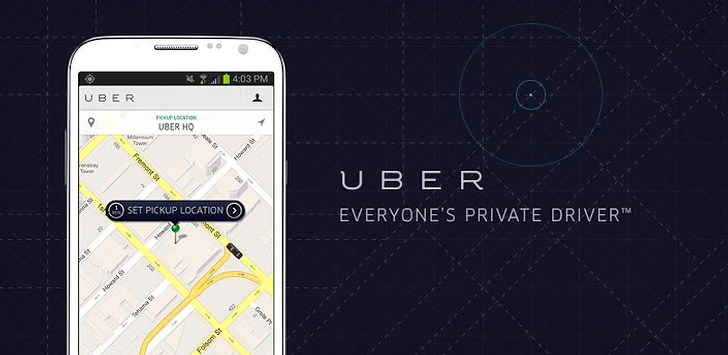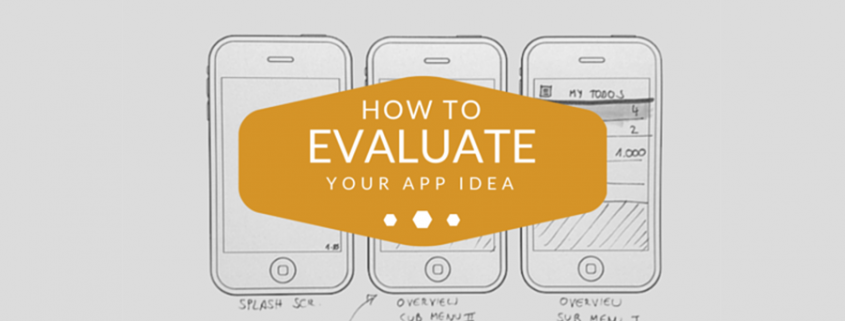How To Evaluate An App Idea
Do you have a ‘brilliant’ and ‘cool’ app idea? If you want to make money in the app marketplace, then a ‘cool idea’ just isn’t enough.
You really need to do your research before you start developing your app.
Taking the time to research whether people will actually use your app will save you wasted time and money.
By now, you’re probably asking yourself; “where do I start and how do I evaluate my app idea?”
Here’s my framework for properly evaluate an app idea. I wish I could take full credit for it…but I can’t.
This is a system that I’ve borrowed and tweaked from researching some of the world most successful tech startups. And from my own work with investors and VC’s.
Watch the video below or keep scrolling to read the takeaways.
1. You’re a problem solver, not an inventor
To understand the real value in your idea you first need to understand the problem. People always come to us with a list of potential features and functions for an app. You need to take a step back from this thinking and really understand what the problem is. What’s problem are you trying to solve?
If you look at the best apps available, they all have one thing in common; they all solve a problem really, really well.
This stems from the fact that they’ve identified the problem in the first place. And studied it…and obsessed over it. “Become one with the problem…” Take Uber for example, they seamlessly connect people who need a ride with a driver through the use of their app. 
2. Who are you solving this problem for?
Who’s experiencing this problem? If you can’t figure this out then you can’t tailor the rest of the development process to this user. Let alone the marketing process… Or business development process… The key, is to do some extensive background research on your research. Create a user persona based on who you believe your target audience is. Make some estimations around their demographical and psychographical details:
- What are they interested in?
- What age group do they fall into?
- Where are they?
- How do they think?
- How do they feel about the problem?
- What is their ideal solution?
This is really important. Say for example you’re designing an application like Uber. You have two types of users. Both with their own set of individual problems. User 1 – They need to be picked up, say at 3am after they’ve been clubbing with their friends. User 2 – The other group just want to make some easy money. So they can use Uber as the marketing platform for their business.
3. Competitive Analysis
 What alternative means of solving this problem already exist? This could be direct or indirect competition. There may be someone with a mobile app who’s already solving the problem really well. Or, it could be a business that’s solving the problem for the customer using in a completely different way. Maybe no where near as well as you can. Take Google for example, they help people find information. A traditional bricks and mortar library also help people find information. They’re two different platforms, solving the same problem. But they’re doing it differently. You also want to focus on finding out how big your market is. That really determines whether you should do this or not… If you have the ability to build a $100 million business then go for it. This depends on the market size. But, if your business can only scale to $100,000. Or lasts for only two years, then it’s probably not worth going ahead with your idea. Right? Look for business opportunities that meet you aspirations. They should be sustainable for no less than 5 years before you need to reinvent yourself. If you do find a competitor don’t be scared off. Competition is healthy. Break down exactly what they’re doing and find opportunities to solve the problem better than they do.
What alternative means of solving this problem already exist? This could be direct or indirect competition. There may be someone with a mobile app who’s already solving the problem really well. Or, it could be a business that’s solving the problem for the customer using in a completely different way. Maybe no where near as well as you can. Take Google for example, they help people find information. A traditional bricks and mortar library also help people find information. They’re two different platforms, solving the same problem. But they’re doing it differently. You also want to focus on finding out how big your market is. That really determines whether you should do this or not… If you have the ability to build a $100 million business then go for it. This depends on the market size. But, if your business can only scale to $100,000. Or lasts for only two years, then it’s probably not worth going ahead with your idea. Right? Look for business opportunities that meet you aspirations. They should be sustainable for no less than 5 years before you need to reinvent yourself. If you do find a competitor don’t be scared off. Competition is healthy. Break down exactly what they’re doing and find opportunities to solve the problem better than they do.
4. How do we solve the problem?
Now you understand the problem, know who’s experiencing the problem and what your competitors doing. You now need to turn this information into a solution. How do we turn all that information into a feature set that will solve that problem? All the whilst making sure it’s intuitive… Do we build a mobile app, a web app or even a software package? Consider the way your users would access this app:
- Where are they when they realise that they need your solution?
- How will they get the most out of your solution?
- How will it incorporate into their daily routine?
5. What’s your unique selling proposition?
 This is something that you need to be clear on from the beginning. Sure, it can change with time, as your idea matures. However, a USP (unique selling proposition) give you a focus;
This is something that you need to be clear on from the beginning. Sure, it can change with time, as your idea matures. However, a USP (unique selling proposition) give you a focus;
What are we committed to being insanely good at?
It’s about focusing in on your problem, your customer and your solution. Then tailoring a beautifully written one-liner to communicate what you do and why people should care. Here are some examples of effective USP’s and their respective companies: “The King of Pop” – Michael Jackson “Sign Anything, Anywhere, Any Time” – Docusign “Everyone’s Private Driver” – Uber What differentiates you from everybody else out there? From your direct and indirect competitors? It’s about understanding the makeup of the market share. What’s taken up your competitors and their alternative solutions. What’s not being catered to? You need to find the gap between these competitors and the alternative solution that doesn’t have your USP. That’s your unique proposition. Filling that gap. Take Uber again for example, they have something that the others don’t have. They’ve found their point of uniqueness.
Conclusion
Now you’ve evaluated your app idea. You’ve defined the problem, solution, target user and your unique selling proposition. It’s time to move on to designing the features and functionality around your app idea. How else can you evaluate an app idea? Share some ideas with the community.
Latest posts by Daniel Portelli (see all)
- How To Evaluate An App Idea - April 10, 2015



